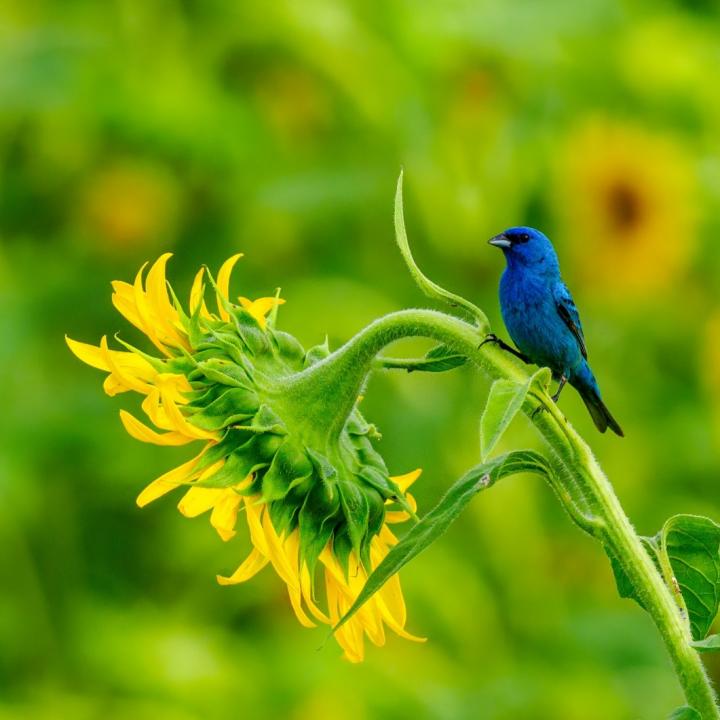Migratory behavior and winter geography drive differential range shifts of eastern birds in response to recent climate change

Credit: Credit: Clark Rushing
Spring is in full swing. Trees are leafing out, flowers are blooming, bees are buzzing, and birds are singing. But a recent study published in Proceedings of the National Academy of Sciences found that those birds in your backyard may be changing right along with the climate.
Clark Rushing, Assistant Professor in the Department of Wildland Resources and Ecology Center, Quinney College of Natural Resources at Utah State University, and colleagues at the U.S. Geological Survey wanted to know how climate change has already affected where birds breed. They used data from the Breeding Bird Survey – one of the oldest and longest citizen-science programs in the world – to conduct their research. “Thousands of devoted volunteers, cooperators, and a joint U.S.-Canadian wildlife management team have contributed to the success of the surveys for the last 54 years,” said Andy Royle, a USGS senior scientists and co-author of the study. “The Breeding Bird Survey is fundamental to our understanding and management of wild bird populations in North America.”
The research team combined Breeding Bird Survey data with powerful computer models to discover changes in breeding range for 32 species of birds found in eastern North America. What they found is surprising:
Some birds’ ranges are expanding. Birds that both breed and winter in North America are extending their ranges north to take advantage of new, warm places to breed. These birds are also maintaining their southern ranges. These results bring hope that some bird populations, such as Carolina wrens and red-bellied woodpeckers, may be resilient to future climate change.
Some birds’ ranges are shrinking. Neotropical migratory birds breed in North America during the summer and migrate to the Caribbean, Central America, and South America for the winter. Neotropical migrants include many species that people love and look forward to seeing each spring such as buntings, warblers, orioles, and flycatchers. The team’s research shows that these birds are not expanding north and their southern ranges are shrinking.
To make matters worse, over the past 50 years Neotropical bird populations have decreased by about 2.5 billion individuals. Rushing explained, “There’s a real risk that, if these declines continue at their current pace, many species could face extinction within this century. Neotropical migrants are vulnerable to future climate change, putting them at risk of greater declines.”
Neotropical migrants already fly thousands of miles each year to breed, so why can’t they go just a bit farther as the climate warms? The researchers suspect the conditions where the birds live during the winter might make this impossible. Migrations require immense reserves of energy, so migratory birds need high-quality winter habitat with abundant food and moisture. Unfortunately, many habitats in the Caribbean, Central America, and South America are being degraded. It is possible that Neotropical birds can’t store enough energy during the winter, so they simply can’t extend their journeys any farther.
“That’s just one explanation,” concluded Rushing, “and it highlights how little we know and how much more research is needed.” And what the team does know wouldn’t have been possible without the help of devoted citizen scientists.
###
Media Contact
Clark Rushing
[email protected]
Related Journal Article
http://dx.




